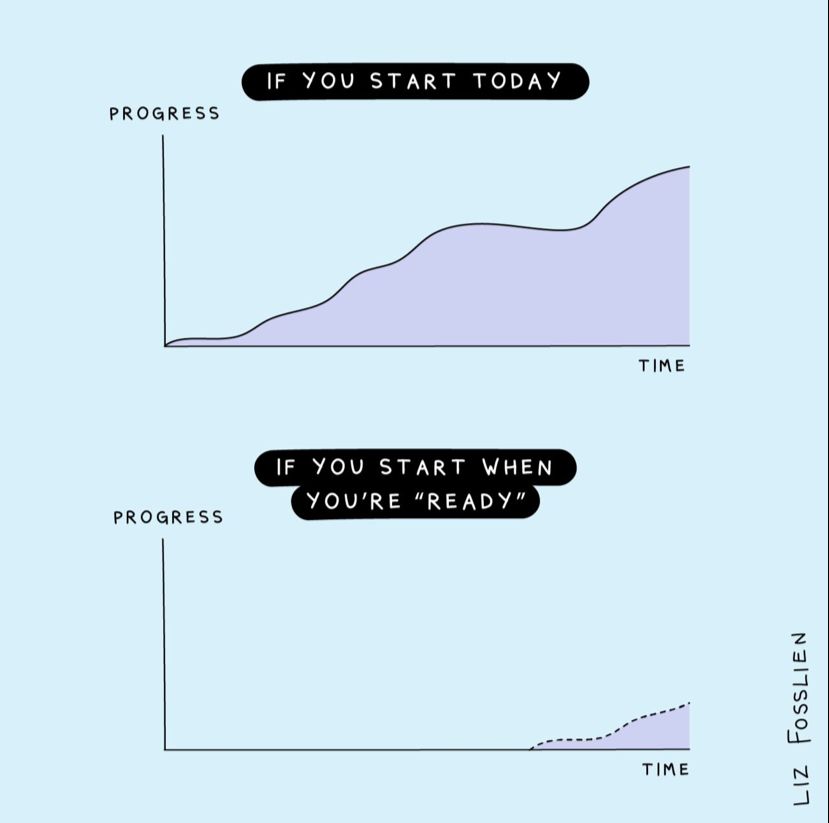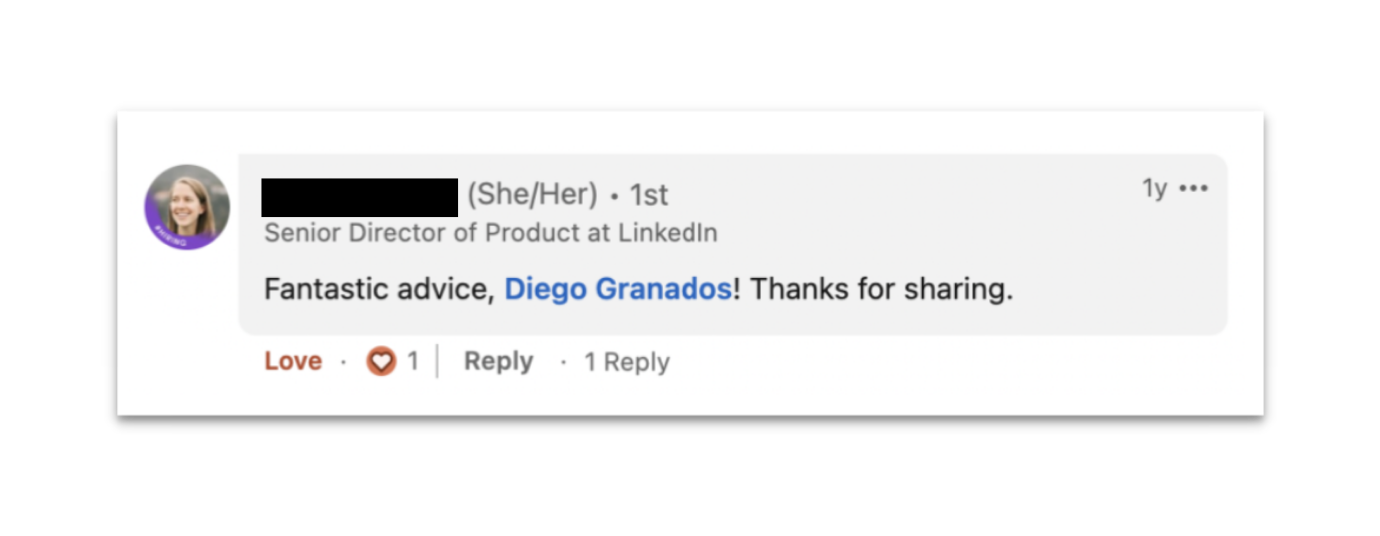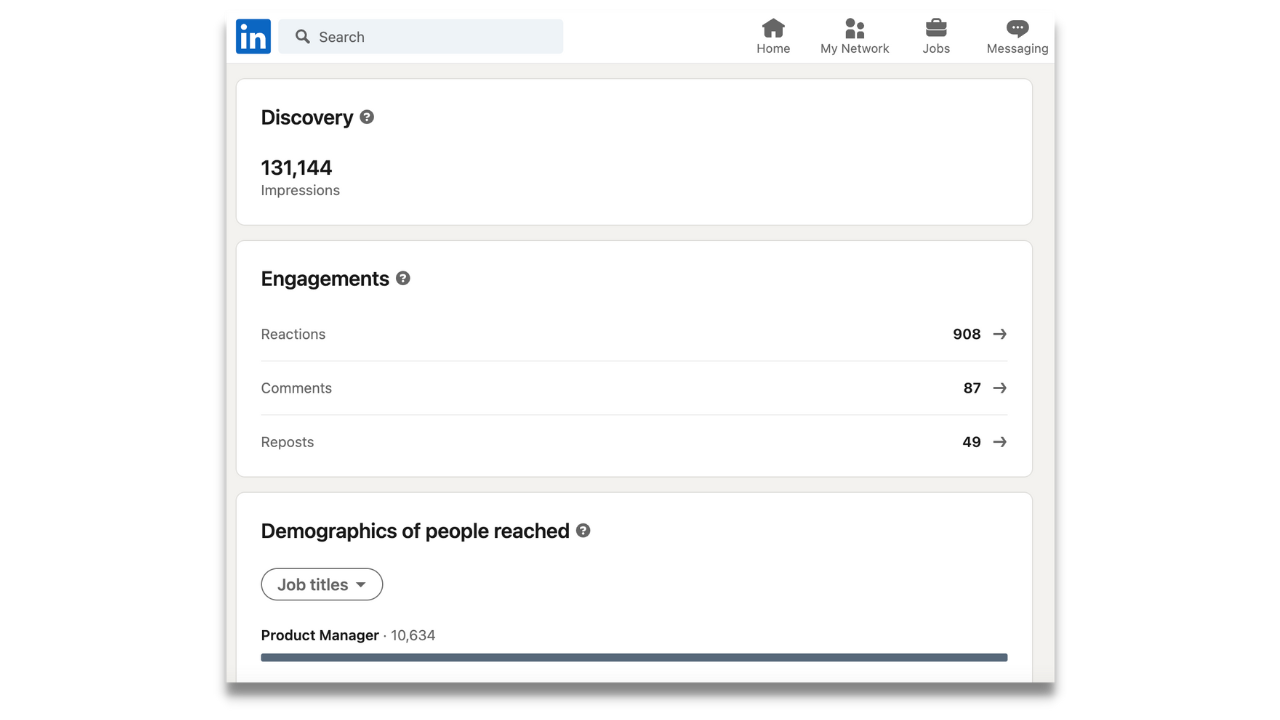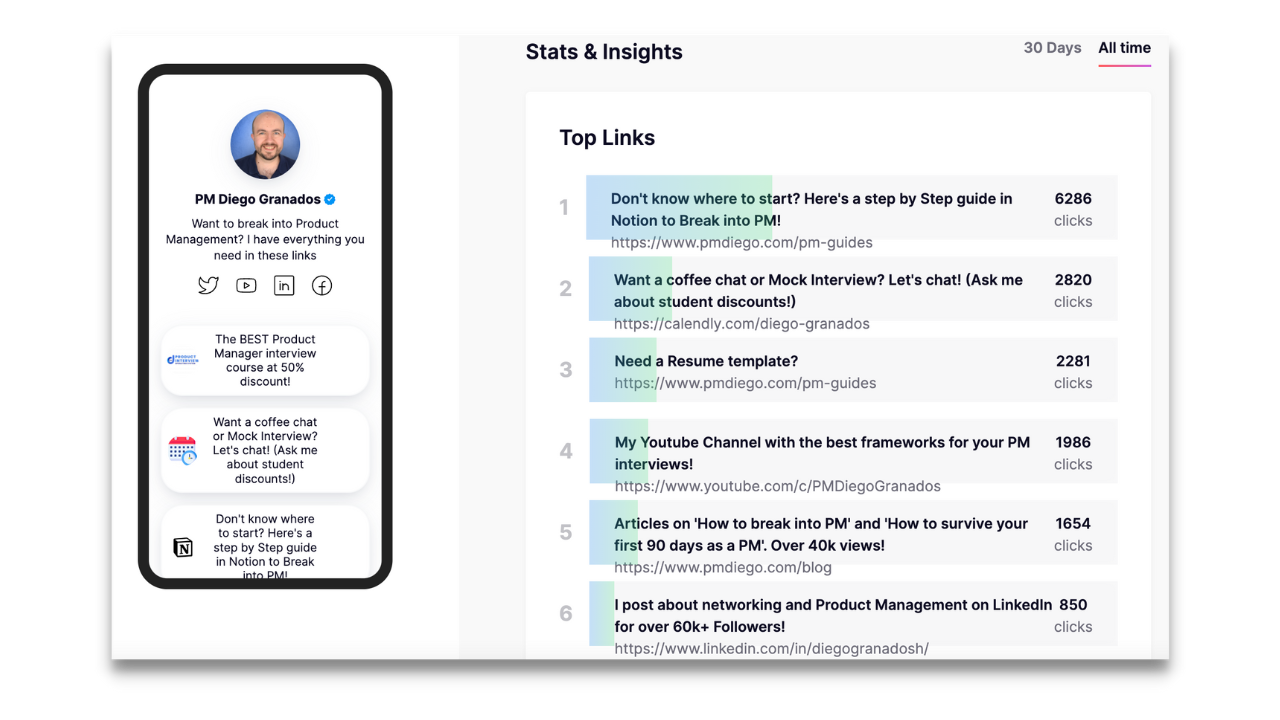
PTPA #007: How To Transition From B2B To B2C in Product Management
Oct 01, 2022Read Time: 5 minutes
Getting a job as a Product Manager in Consumer Products (B2C) can feel like a chicken and egg problem.
You need experience in Consumer Products to get a job in a Consumer Product company.
A few years back I tried to switch to B2C companies and I was met with the same question while networking and on a couple of calls with recruiters:
“What is your experience with consumer products?”
I never made it past that first call. I had no good answer to that question.
I spent 5 years working in Enterprise (B2B) and switched this year to work in Consumer Products without actively planning for it. Little did I know that I was already working on my transition for a long time.
If you are curious about the differences between B2B and B2C in Product Management, you can see this LinkedIn Post.
Today I am going to share how I transitioned into a Consumer Product company and how you can start working on your transition today.
 Image by @fosslien
Image by @fosslien
How I transitioned
A year ago, I made a post on LinkedIn about landing interviews at different companies.
One of the comments on that post was from a Senior Director of Product at LinkedIn.
I saw this as an opportunity to network and get some advice for my career, and learn what it takes to get a job at a company like LinkedIn.
I replied and followed up with a direct message to ask her for a coffee chat.

My 30-minute coffee chat turned into an interview very quickly. Halfway through our conversation, she asked me: How can we improve LinkedIn?
And while this might have been shared as a question to get feedback for her team, I put on my interviewee hat and started answering as if I were in an interview while keeping it conversational.
1 coffee chat with her turned into 3, which turned into meeting her team, which turned into the interview that led to my current job at LinkedIn.
That post might have given me the opportunity to have a coffee chat, but not the interview and much less the offer. So what was it, then?
This time I had experience in the Consumer space, but not through my job.
Every other Product Manager experience I’ve had to this point was transferable.
My experience in Consumer Space
Uploading videos on YouTube and making social media posts is not “Consumer Experience”.
But building a system to (in my case) help people land their next Product Manager job is a good proxy for it - posting content on social media is just one part of the system.
My system has 5 parts:
- Customer research
- Product
- Marketing
- Metrics & Experimentation
- Feedback
1. Customer Research
I mapped out the journey through which current and aspiring Product Managers go through.
I conducted ~20 interviews and ~5 surveys to learn which were the moments where people struggled the most.
I also did things that couldn’t scale. I did free 1:1s for months to help people with their journey to land their next role. I helped them with their resume, career aspirations, and interview preparation.
When I learned what tasks were repeated the most, I built products.
2. Product
There’s no perfect nor one size fits all solution for a career journey. So I built small products that would solve problems at different stages of their journey. For example:
- A series of videos and interviews with experts and recruiters to help with their resumes.
- A step-by-step guide to remove noise and help those who were early in their journey.
- My YouTube channel on its own became a guide for PM interviews.
3. Marketing
Somehow, somewhere, I had to tell my audience that I have these products for them - this is where social media and creating content on LinkedIn, Twitter, and YouTube come into play.
It is also a powerful tool to gather feedback and see if there are any other problems I may not be solving at the moment.

4. Metrics & Experimentation
My Consumer experience wouldn’t be complete without tracking metrics and doing experiments (A/B tests).
I grouped my product in one place where I could look at metrics to understand my customers and see where they needed the most help based on usage.
I started to look at metrics like these ones to tweak and improve my content:
- Posts: Impressions, Engagement (likes, comments, shares), CTR
- Newsletter: Subscriptions, Open Rate, CTR
- Videos: Watch Time, Impressions, CTR, Demographics

I would then use those metrics for A/B tests and learn what my audience prefers. For example, changing Thumbnails on YouTube or rewording content for social media.
I would track the impact of these changes to see which one performs better.
5. Feedback
Finally, Feedback was critical for my product to grow, so I would continue having 1:1 calls, observing comments on my content, and running surveys occasionally.
Putting it all together
During that coffee chat, I didn’t just speak about my videos or my posts on LinkedIn.
Instead, I spoke about my job, my product, the system, my experience with Job Seekers, and how everything works together to give me the relevant experience to join a Consumer Product company like LinkedIn.
The art of showing that I had consumer experience outside of my job had nothing to do with how well or bad my content performed, but rather how I was able to communicate that every piece of my product was carefully created and structured to solve my customer problem: Landing their next job in Product Management.
This product I created helped me gain two things I didn’t have so far:
- Experience with A/B tests and a more Metric driven approach to making decisions (not always present in B2B).
- Industry expertise for problems that job seekers have when they are looking for a new job, which in this case was highly relevant for LinkedIn.
Getting my interview at a Consumer Product company like LinkedIn required 4 things:
- Experience in Product Management (My role in B2B).
- Experience in an industry/niche (Job Seeker journey to find a job).
- Experience with Consumer Products (My Side Project).
- Networking to tell my story.
You might have the first one, now think about what type of industry/niche expertise you want to build and create your own product to show that you know about Consumers.
And when you are ready, it’s time to craft your story and network
1. Crush your Product Manager interviews and get an offer here. (Join 550+ students!)
2. Schedule a 1:1 session with me for Mock Interviews and Career Guidance here.
3. Promote your brand/business to 7K+ Newsletter subscribers by sponsoring content.
Helping Everyone To Land Their Next Product Manager Job
Join 8,000+ current and aspiring Product Managers in my Newsletter. Every email gives you a quick and actionable tip on landing your next Product Manager offer.
I hate SPAM. I will never sell your information, for any reason.

